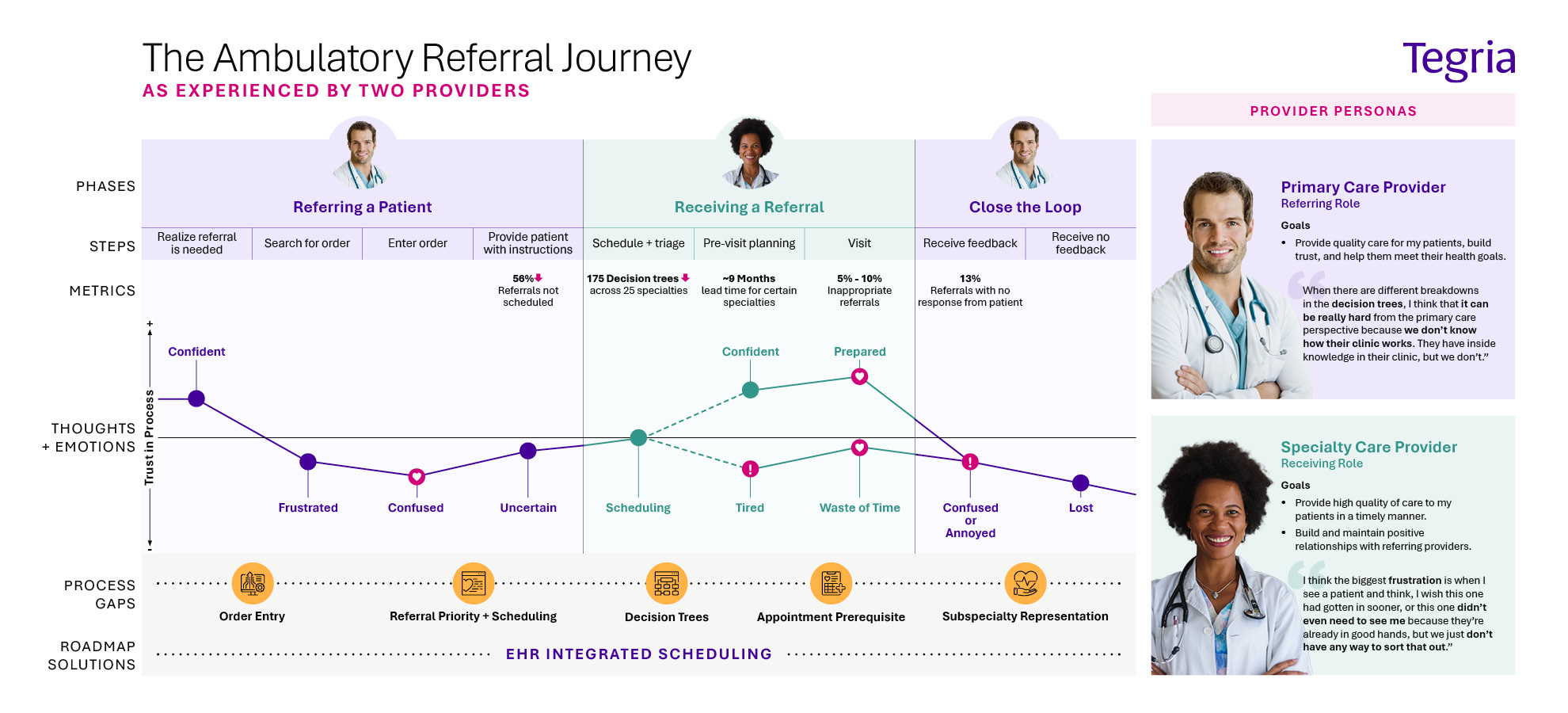Insight
Journey Mapping: Your Key to Understanding Experiences
What Is Journey Mapping?
Understanding and enhancing the experiences of patients, physicians, and staff is more crucial than ever. A journey map delivers key insights required to elevate the experience of patients, providers, and staff by providing a visual, holistic representation of their healthcare experiences. This broad view of pain points and moments of delight catalyzes change by encouraging cross-functional collaboration and data-driven decision-making, creating confidence that scarce resources are allocated in the most impactful ways. A journey map provides a necessary framework for measuring, monitoring, and managing initiatives aimed to improve experience over time.
When 7 of 10 patients would switch providers for convenience alone, it’s more critical than ever that you understand your patients’ experience.
How Can Journey Mapping Help Organizations Improve Experiences for Patients, Providers, and Staff?
Patients, providers, and staff experience unique frustrations, barriers, and moments of joy throughout healthcare interactions. Creating a journey map for each of these key audiences allows leaders to visualize the experiences and perspectives of providers, staff, and patients as they attempt to complete a routine task:

For example, an organization might create a journey map to gain insight into the ambulatory referral journey through the perspectives of both primary care and specialty care physicians. The resulting journey map will show the thoughts, emotions, and barriers experienced by both personas throughout the referral process. This approach can be used to illuminate experiences for any other user group within healthcare, from oncology patients to emergency department nurses.
Journey Mapping Example

Creating a Journey Map
Journey mapping is a powerful process that illuminates each step a patient, physician, or staff member takes in their interaction with healthcare services. The essential stages of journey mapping include collecting stakeholder data; identifying key touchpoints; mapping out the emotions, challenges, and opportunities at each stage; and analyzing maps for actionable improvements.
Best Practices
- Define the purpose and scope of your map(s).
- Identify personas involved in the journey to represent typical users with distinct needs, goals, and behaviors.
- Map hypothesized journey to serve as an outline and, often, a point of comparison with reality.
- Collect data through customer interviews, feedback, analytics, internet reviews (Google / Facebook) and existing data sources such as Press Ganey or Qualtrics.
- Leverage AI to evaluate data and deliver key insights into customer emotions at specific points along their journey and overall.
- Create timeline of connected interactions that represents the chronological sequence of events in customer journey.
- Add context and details about each touchpoint based on data analysis, quotations, and digital assets such as video clips.
- Use your journey map by comparing your performance to industry baselines, identifying opportunities to maximally enhance the overall customer experience. Return to update your map as changes take effect.
Effective journey mapping can reveal opportunities to enhance patient experience, streamline operations, or improve service delivery. From first contact to the final touchpoint, journey mapping provides insightful perspectives that drive improvements in care delivery, operational efficiency, and patient satisfaction. Learn more about our journey mapping services.